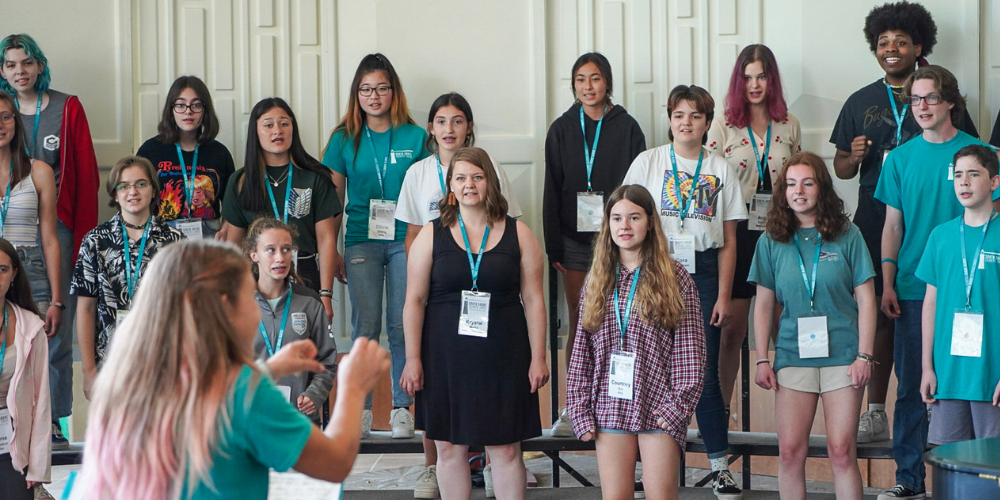 Rehearsing the South Shore Children's Chorus
Rehearsing the South Shore Children's Chorus
Over the past few years, some very important discussions have been happening about ADEI (accessibility, diversity, equity, and inclusion) in the choral field. These conversations have been game-changing, as we see more and more choruses actively working to increase access for people from diverse backgrounds and cultures. While this work includes actions including new programming choices and appointing diverse leaders in our governing organizations, it goes even further to examine our practices with a critical eye and ask, “why?”
This past fall, I wrote a personal blog post on why my organization (the South Shore Children’s Chorus) has no auditions, voice placements, or even meets the students before they attend their first rehearsal. While I received a significant amount of agreement, a surprising number of readers rejected the idea that singers (specifically secondary level singers) with no choral experience and singers with extensive choral experience could successfully sing in the same ensemble. I heard responses such as:
“If my top singers were with new singers, the new singers would be too overwhelmed and would quit!”
“I hear my singers before joining to give them the best experience possible so I can know exactly what is happening.”
“My top singers would quit if they had to sing next to people with no experience.”
There is a lot to unpack with these responses! However, where I pause the most is seeing the hesitancy to include singers with a diversity of musical/choral experience in the same ensemble. Alongside my friends and colleagues doing ADEI work daily, I have to ask the question….why?
Why are we, as a field, so hesitant to include singers with a diversity of musical/choral experience in the same ensemble?
1. Because we aren’t taught how.
Our choral textbooks teach us the games to play with elementary school singers, how to help nurture a middle schooler's changing voice, or the appropriate repertoire to program with a high school ensemble of a certain level. We are prepared with tools on how to prep a freshman chorus of newbies, or our varsity chamber choir with juniors and seniors. We might even find chapters on how to do an initial voice placement or audition with a singer. What is rare to find is instructions on how to get a secondary level singer to match pitch, and going even further, how to create an accepting culture in your ensemble of those who are still learning to match pitch.
2. We expect less of untrained singers.
We make an assumption that because a singer has no classical choral experience, they can’t make the same contribution as someone with classical choral experience.
We all know what assuming does - and this is a prime example. The truth of the matter is almost everyone has some form of musical experience. If they’ve heard music, then they have experienced it. Perhaps they’ve even been an active participant in music by singing along with the radio or singing “Happy Birthday” to a family member last week. Perhaps they played clarinet in their school band in the 5th grade. Perhaps they plunk around on the piano at their Grandmother’s house at Thanksgiving. When we ask choral singers about their “choral experience”, we have an expectation that they list how long they’ve been in a choir, or have taken voice or piano lessons, how well they can read a choral score, or what major pieces they’ve sung. We forget to ask if they go to church, or sing in the car or in the shower. All of this is singing experience, and all of it is important. I have very strong singers in the SSCC High School ensemble who came to the chorus with “no experience” other than a love and passion for singing and are now leaders in sound-making. The expectation was set for them as they walked in the door - just because you haven’t done this specific kind of group music-making before, doesn’t make you any less important.
3. We consider music literacy superior to learning by ear.
I love teaching music theory and literacy. I love teaching sight-singing. I think it is a blast opening up the world of written music to someone who thinks it is so far beyond their reach. Music literacy can unlock confidence in ways that you would never expect. However, it is not the only, the best, or the easiest way to learn music. In fact, most of the music an average person has learned in their lifetime is not by reading it.
A student of mine who is a recent immigrant from Haiti said to me post-rehearsal a few weeks ago: “Mrs. Oberoi, I want to learn to read the music. I just learn by listening and singing it that way.”
I answered her: "And what’s wrong with that? That’s how you learn. And that’s wonderful! Of course, I can teach you to read the music, but there is nothing wrong with the way you are doing it now.”
There is a balance to be struck here, and it isn’t in what we teach or how we teach. It isn’t teaching one piece by rote to say we did it and pay homage to cultures who learn/perform by ear predominantly. It’s about firmly believing that learning by ear is a valid way of approaching choral music for new singers, and capitalizing on their ability to do just that in your teaching style.
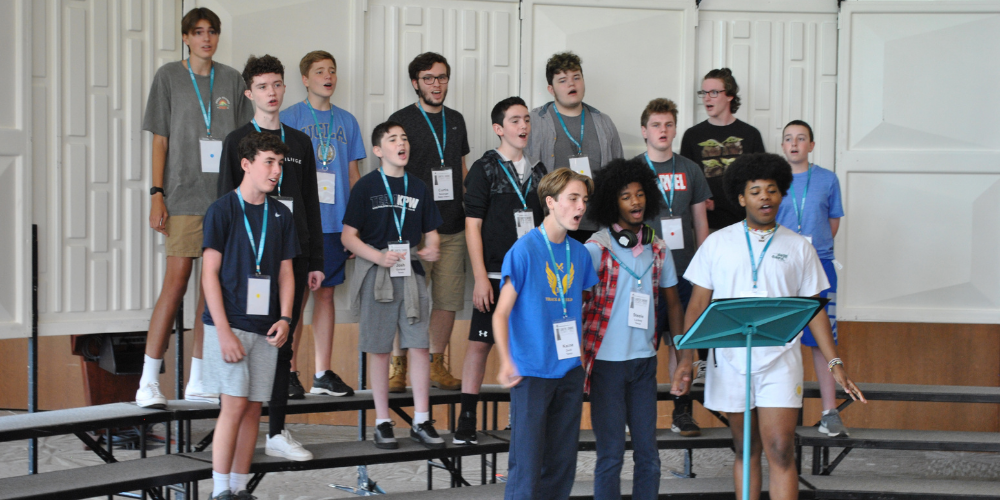 The South Shore Children's Chorus rehearsing
The South Shore Children's Chorus rehearsing
So how do we, as choral leaders, embrace diversity of musical experience in our chorus members?
1. Talk about it.
As a general rule, I don’t avoid elephants in the room if I can help it. I name everything out loud about what is happening in the room to my high school students, which gives us a very honest relationship between students and conductor. Diversity of musical experience is one of my favorite ways to lay it all out on the table. My particular group is made up of singers from varying schools across the area. Some singers have chorus as much as twice per day in the school day, singing in several ensembles regularly. Other singers attend the local vocational-technical school or private school and choir is not an offering. I like to say this out loud to my singers. I then point out a particular student: “They don’t have choir offered at their school. Does that make them less worthy of being here? Of being involved in this one?” Conversations like this can be life-changing for both kinds of singers,. The singers who may not have the “classical” choral experience feel validated openly, and those who have more experience recognize that a person’s worth isn’t defined by their situation.
These open and honest conversations can help prevent members from quitting due to diversity of musical experience. This is where we can build understanding and break down choral elitism. This is where we can teach singers that just because you can sight-read doesn’t mean you are better than sitting next to someone who can’t. And adversely, this is where we can teach singers that just because you can’t sight-read doesn’t mean that you can’t be here, in this group, learning with us.
2. Your language choices and reactions are your greatest tool.
A few weeks ago, mid-rehearsal, I was asked by a junior: “So, Mrs. Oberoi, are the blocks that are on top of the middle line worth two silences?”
This moment is where I can validate, with my language and reaction, this student and their question. I can feel the tension in the room from my “more experienced” singers. I can feel them thinking “why is she asking this? She’s a junior like me. She doesn’t know this? She should know this.”
My hope, in this moment, is to change the inner dialogue happening with these singers. With my response, I hope that their internal thoughts will become “She and I have a different musical experience, I am so glad she feels comfortable asking a question in this space. I feel comfortable asking a question in this space, and she deserves that too.”
I take a moment to carefully craft my answer. Flying through my head is the fact that she knows that a “silence” is a quarter rest, and must have deduced from knowing the length of a half note, and listening to context clues as we were singing through that measure, to define the symbol in front of her.
“Yes! It is worth two beats of silence. I love seeing how you figured that out using context clues because you know there are four beats in a measure and two of them are taken up by a half note. Because this is also worth two beats, just of silence rather than sound, it is called a half rest. When it hangs down from the middle line, it is called a whole rest worth four beats of silence. Great question, thank you for asking!”
Validation nation! Rather than a condescending or even amused reaction, I validated the question in front of other students. The whole choir relaxed their body language, and they began nodding and smiling at their peer. The student who asked the question smiled said thank you and jotted down a note in her music. In 45 seconds, I was able to further the culture of inclusion and acceptance through my own reactions and the language I used to answer a question.
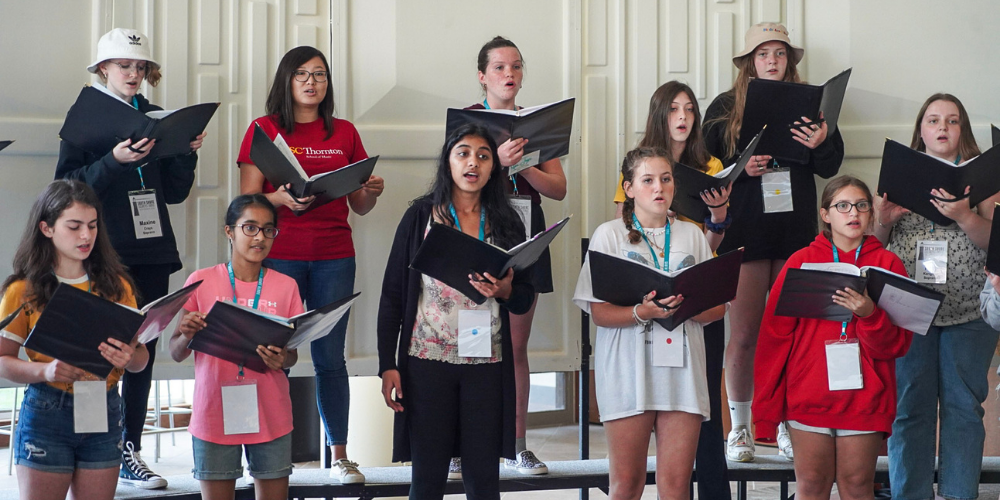 The South Shore Children's Chorus rehearsing
The South Shore Children's Chorus rehearsing
3. Expectation of performance is the same, it’s how you get there that's different.
I expect singers in my ensemble to know their notes and rhythms, to express text and emotion, and to sing the details we have worked on together in rehearsal. I expect this from every singer, regardless of their previous experience. At our concerts, you wouldn’t be able to tell from the performance who has sung in a chorus before vs. who hasn’t. Everyone has the same expectation of performance, but how they get there is a different story.
However, how you get there as a singer is directly tied to the teaching tactics and styles used by the conductor. For those who have a specific strategy and steps on “how we learn a piece of music,” I would encourage you to break that mold. Are you teaching by eye? By ear? By feel? All of it is important, and using teaching techniques for all of these learning styles ensures that every singer will feel engaged, confident, and validated. I have singers that struggle with music literacy that will do very well clapping and stepping (“feeling”) 6/8 time, or who easily grasp the difference between compound and simple meter. Singing is a whole-body, holistic experience. Understanding not just how music looks or sounds, but how it feels, is imperative to a total choral experience. Varying your teaching style allows for each person to improve, just a little bit, in each area for every piece in your program repertoire. Are you giving them the tools of expression and body movement prior to right before you perform? Thinking about these aspects and teaching in a holistic style will result in “leveling the playing field.”
If the expectation of performance is the same, then it eliminates the fear of “one singer is absent tonight.” This can be a huge pitfall for teachers and conductors. If one “stronger” singer in the section is absent, we treat that absence as something different than if a less-experienced singer in the section is absent. We impress on our “leaders” that their attendance is necessary to keep their section afloat. If expectation of performance is the same, then even without a strong tenor singer in attendance, my tenor section will sing well.
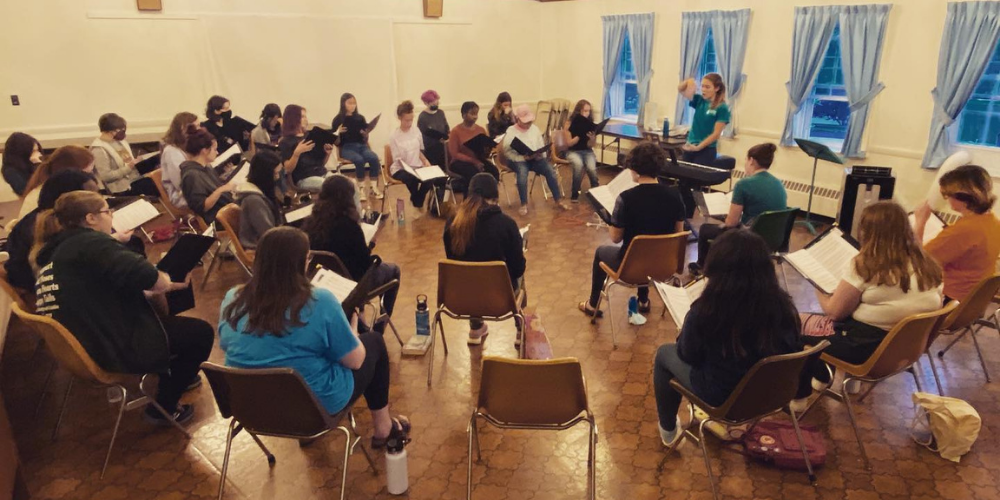 Rehearsing the South Shore Children's Chorus
Rehearsing the South Shore Children's Chorus
Try it out. Don’t audition your choir. See who shows up. Work with those people. Try considering them all on an equal playing field, regardless of how many choral pieces they’ve sung in their life. Building this culture begins to break down the choral elitism we see so often, and is accepting and inclusive of singers from all types of backgrounds. Are you still hesitant to try? Have you tried and run into another issue?
Found something that's worked for you? Let us know in the comments below. I’d love to help you on your journey of inclusion!
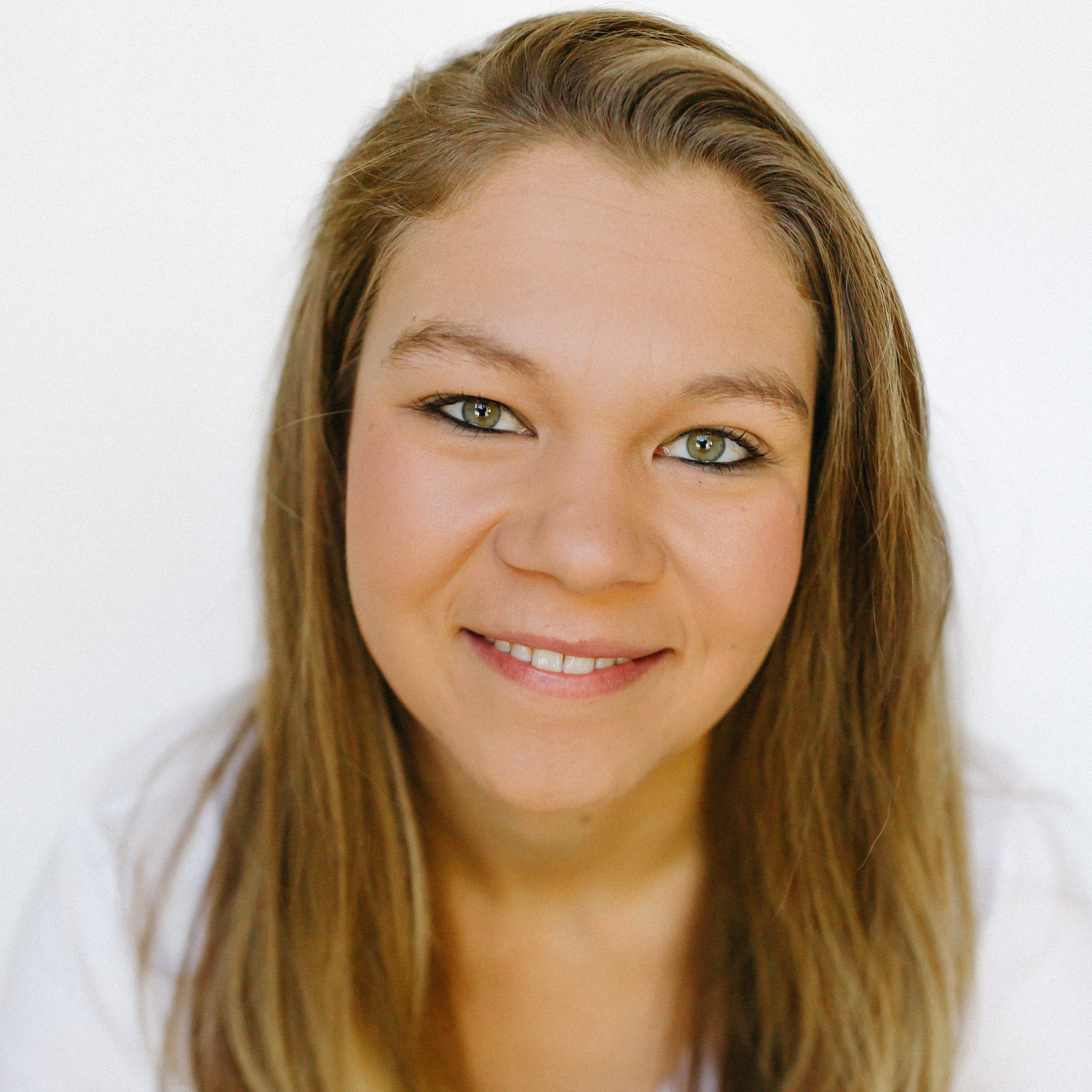
Kirsten Oberoi is a music educator, podcaster, composer, vocalist, and arts administrator in the Boston Area. She is the Founding Artistic Director of the South Shore Children's Chorus, the General Manager of the Greater Boston Choral Consortium, and recently launched her podcast Choral Connectivity: A People-First Approach to Singing. When not chorus-ing 24/7, Kirsten enjoys cooking meals for her and her choral-director-and-musical-theatre-composer husband and heading to competition obedience class with her two golden retriever puppies Chester and Charlie.

